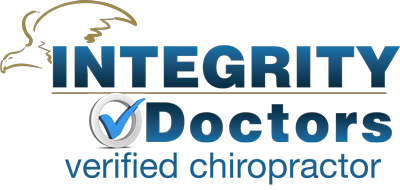Conditions
Whiplash is a common injury that affects millions of Americans each year.
Those who have been struggling due to a whiplash injury understand the difficulties it can pose. The pain from whiplash can be debilitating and interfere with your daily activities such as work or school. These types of injuries can last weeks or months.
We help and provide a treatment solution for people who suffer from whiplash injuries.
When your neck bends quickly and forcibly forward and then backward or the other way around, or moves beyond its normal range, it can result in a neck strain or injury called whiplash. It is commonly caused by an auto accident, many times a rear-end car collision. The sudden force or blow stretches and rips up the muscles and tendons and ligaments. A collision from any direction or even a slow-speed collision can also cause whiplash.
The pain of a neck strain is sometimes felt immediately. In other cases, it can take several hours or days before the neck begins to hurt.

Whiplash is commonly associated with rear-end vehicle collisions where the impact pushes the torso forward while the head and neck are thrust backward, leading to a rapid, whip-like motion. This sudden movement can hyperextend the neck, damaging the muscles, ligaments, and tissues that support the cervical vertebrae. While most prevalent in rear-impact car accidents, whiplash can also occur from side and front impacts, illustrating its potential in any directional collision.
Beyond automotive accidents, whiplash injuries can arise in various other situations, including:
Activities such as football, boxing, and martial arts frequently involve sudden impacts that can jolt the cervical spine.
Incidents in horseback riding, cycling, or even falls during physical activities can induce similar whip-like motions.
Direct blows to the head, physical altercations, or other forms of abuse can also result in whiplash.
Rides that jerk or jolt the body, especially those involving rapid starts or stops, can mimic the abrupt motion that causes whiplash.
Recognizing these varied causes helps in identifying potential risks and taking proactive steps to prevent whiplash or seek appropriate care following such incidents.
Whiplash injuries manifest a range of symptoms that typically develop within 24 hours of the incident, primarily involving the neck and head. The intensity and presence of symptoms can vary, depending on the severity of the injury. Early recognition is crucial for effective management and recovery.
This is the most frequent complaint, where pain might intensify with movement or remain constant.
Often starting at the base of the skull, these can extend towards the forehead and eyes.
A general feeling of weariness or lethargy is common post-injury.
Difficulties with focus and clarity of sight may occur.
These include difficulty concentrating and memory problems, impacting daily functioning.
Issues such as insomnia can result from the discomfort and stress of the injury.
A ringing or buzzing in the ears can sometimes develop.
Our professional team of providers and staff will provide you with the care that’s right for you.

Chiropractic care is highly effective for treating whiplash, as it addresses the root causes of pain and discomfort without the need for invasive procedures. Chiropractors specialize in spinal adjustments that help realign the neck and spine, relieving pressure on the nerves and muscles affected by whiplash. These adjustments not only reduce pain but also restore mobility and improve range of motion, crucial for recovery from neck injuries. Additionally, chiropractic techniques can help mitigate inflammation and promote natural healing by improving blood flow to the affected areas.
In conjunction with manual spinal manipulation, chiropractors often employ supplementary therapies such as muscle relaxation and stimulation, therapeutic exercises, and lifestyle advice to support recovery. These comprehensive care strategies not only alleviate the immediate symptoms of whiplash but also aim to strengthen the neck muscles, improve posture, and prevent future injuries. Patients typically experience significant improvements in comfort and function, allowing them to return to their daily activities with greater ease.
Chiropractic care helps recover from whiplash by realigning the spine to its proper form and relieving pressure on the nerves. Chiropractic adjustments, combined with muscle relaxation and stimulation techniques, address both spinal alignment and muscle dysfunction, which are common issues following a whiplash injury. This approach helps to reduce pain, restore mobility, and speed up recovery.
To treat whiplash, chiropractors may employ a variety of techniques including spinal manipulation, flexion-distraction, and instrument-assisted manipulation. Additionally, they often use soft tissue therapies such as massage, trigger point therapy, and stretching exercises to relieve muscle tightness and enhance the healing process of the neck muscles and tendons.
Yes, chiropractic care can be very effective in managing and resolving long-term effects of whiplash, such as chronic neck pain and stiffness. By addressing the underlying spinal and muscular issues associated with whiplash, chiropractic treatments can help prevent chronic conditions from developing and improve overall neck health and functionality.
During your first chiropractic session for whiplash, the chiropractor will perform a thorough assessment that includes a detailed history of your injury and symptoms, a physical examination of your spine, and possibly diagnostic imaging. The initial visit may also include the first treatment session, where gentle adjustments and therapies might be applied to begin addressing your symptoms.
The frequency of chiropractic visits for whiplash treatment depends on the severity of your symptoms and your response to the initial treatments. Initially, you might need to visit several times per week. As your condition improves, the frequency of visits may decrease. Your chiropractor will tailor a treatment plan based on your specific needs and progress.
Our professional team of providers and staff will provide you with the care that’s right for you.
N8 Family Chiropractic provides quality chiropractic and wellness services at each of our locations. Whether you are young or young at heart, we believe chiropractic care can help you.

The contents of this website including text, graphics, images, and other materials are provided for informational purposes only and is not intended to be a substitute for professional health advice, diagnosis, or treatment.